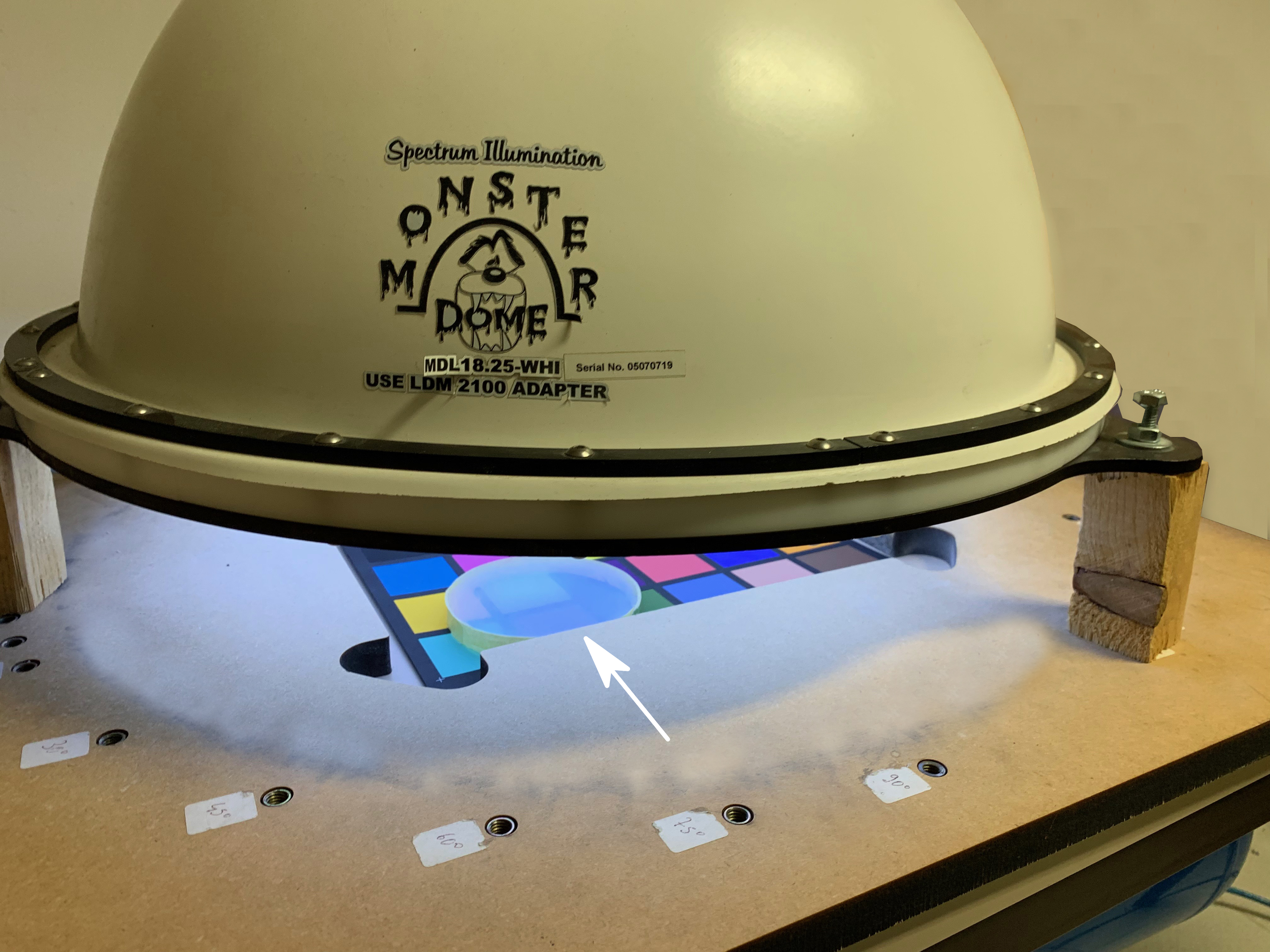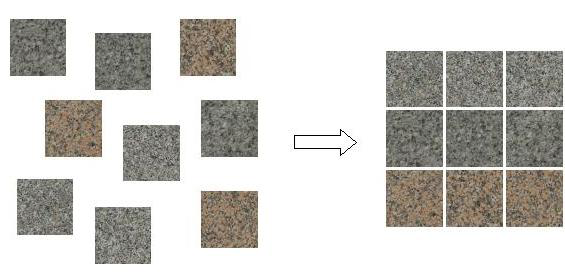Industrial applications of image processing
Characterisation of the colour rendering properties of transparent materials
Transparent materials play an important role in glazing systems and account for most of the variation in the spectrum of transmitted daylight. We have developed a new methodology for the evaluation of the colour rendering properties of transparent materials and applied it to the assessment of the colour rendering properties of monolithic aerogel.

In the picture: imaging system with the sample of monolithic aerogel to be tested. See also: Buratti, C. et al. Experimental characterization of the color rendering properties of transparent monolithic aerogel (2020) Solar Energy, 205, pp. 183-191.
Analysis of urea-water sprays
The injection of urea-water sprays within selective catalytic reduction systems is the leading technique for reducing the emission of nitrogen oxides from Diesel engines. For the process to work properly it is crucial to guarantee the adequate size, velocity and distribution of the spray droplets upstream of the catalyst. It is therefore extremely important to understand the process of spray formation and evolution as well as possible. The objective of this reaserch is to develop a methodology for inspecting the behaviour of urea-water sprays in realistic conditions. Our interest is in invetistigating the use of imaging-based method as potential alternatives to standard methods such as phase-Doppler anemometry.

![]()
In the picture, from left to right: original image, image after background removal and binarized image. See also: Postrioti, L. et al. A methodology to investigate the behaviour of urea-water sprays in high temperature air flow for SCR de-NOx applications (2015) Fuel, 150, pp. 548-557
Defect detection in paper
Paper may contain particles of various type, and the papermaking industry is increasingly concerned with the development of quick and reliable systems to detect and characterise such inclusions automatically. We studied a sequential, two-step procedure based on preliminary classification to differentiate defective paper patches from the defective ones followed by thresholding to separate the impurities from the background.

![]()
In the picture, from left to right: original sample, subdivision into inspection areas, identification of the defective areas and separation of the paper impurities from the background. See also: Bianconi, F. et al. A sequential machine vision procedure for assessing paper impurities (2014) Computers in Industry, 65 (2), pp. 325-332.
Automated grading of industrial products
The objective of this research is grouping products into lots based on the criterion of maximum similarity. We have worked with specific products such as natural stone (marble and granite) and wood for flooring (parquet).

In the picture: grading granite tiles into batches of similar visual appearance. See also: Bianconi, F. et al. Automatic classification of granite tiles through colour and texture features (2012) Expert Systems with Applications, 39 (12), pp. 11212-11218.

